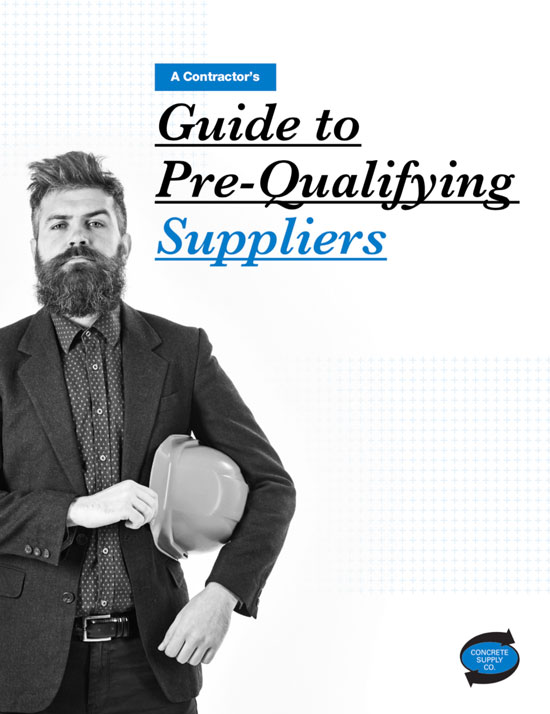How to Winterize Your Construction Site
How to Winterize Your Construction Site
Unpredictable–there really is no better way to describe winter weather conditions in the Carolinas.
While we see our fair share of blue sky, sunny, 60 degree days, it’s not all that uncommon to see arctic temps (by our standard), freezing rain, sleet, ice, and even snow in the forecast. We should also mention, the switch can happen quite literally overnight.
When real winter conditions take effect, construction work becomes significantly more difficult and dangerous. But if there’s one thing those of us involved in the construction industry know, it’s that deadlines don’t stop for anything–especially outside temperatures or weather.
Winter brings a whole host of new hazards to your construction site. Therefore, it’s important to understand how to properly winterize your team and your worksite.
Taking steps to winterize your construction site will:
- Prevent accidents with your crew
- Ensure your crew is able to continue working productively (and safely)
- Keep the project moving forward (hey, even if it’s moving slowly–it’s still moving!)
- Limit citations for safety violations
- Protect the overall project investment, equipment, work-ethic, etc.
Know When To Call It A Day
Know when you’re putting the safety of your crew and productivity of your site at risk. Heavy rain, frigid temperatures, high winds, ice or snow can put site and crew managers in a difficult position to “call it a day”. If you don’t call off the workday altogether, you may consider limiting work hours to only the warmest parts of the day or providing more frequent breaks.
When creating short and long term project timelines, be sure to account for inclement weather that could create project delays.
To avoid being caught off guard by weather changes, keep a close eye on the forecast and make judgment calls based on that. Then, have a plan in place to get the site and crew prepared. The National Weather Service is a reliable source for local weather information.
Maintain Functioning Equipment
When bad weather is looming, take steps to secure equipment, materials, and temporary structures to prevent potential damage. Store scaffolding, position cranes, secure loose materials like netting, tools, ladders, chutes, and other items that could shift or move during a storm.
Keep in mind some equipment on your site will feel the effects of weather more than others. Before use, equipment and vehicles should be warmed up properly and then inspected to determine whether they are functioning properly or if they require service.
Educate Crews On Winter Work Safety
While your crew should have a thorough understanding of how to work safely in all types of conditions, winter weather is especially critical. Educate your team on the hazards of working in winter weather and provide them with the knowledge to keep them safe.
Employers should encourage crew members to wear necessary personal protective equipment (PEE) for winter conditions. Layers of loose-fitting clothing will keep heat insulated and a layer to protect against wind and rain on top will provide additional comfort. If you get warm throughout the day you can easily remove a layer and continue working. Knit masks, warm hats, water-resistant gloves, and slip-proof insulated boots may also be necessary depending on the severity of the conditions.
Employees should be able to recognize the symptoms of cold-related injuries. This way, they can better monitor themselves and their coworkers to ensure safety throughout the site.
While many employers recognize the importance of providing their crew members with water on warm days, it’s just as important to maintain hydration on cold days. Warm liquids during breaks can keep people warm and hydrated.
Ensure Clear Work Surfaces
When temperatures drop and working surfaces become wet, the risk for injury is heightened. Falls are already one of the most common types of construction site accidents. In order to prevent slips, trips, and falls, all walking surfaces should be cleared of snow or ice and coated in ice melt or sand as quickly as possible. Surfaces should include roofs, ladders, scaffolding, roads, and so on.
Pick up loose debris, waste materials, and misplaced tools as frequently as possible to prevent a hidden hazard from causing injury. Never use scaffolds, aerial lifts, or ladders in ice, snow or wind! And keep your site stocked with floor mats and slippery surface signs for added coverage.
Cold Weather Concreting?
If your project timeline requires you to place concrete in the cold weather, there are a few things you’ll want to know:
- What can go wrong while pouring concrete in cold weather conditions. More or less the problems you’ll face while cold weather concreting.
- How your ready mix provider can help you overcome the problems associated with cold weather concreting. The changes a supplier can make to help your concrete withstand the cold temperatures.
- The mistakes frequently made when cold weather concrete pouring. And how best to avoid making those mistakes yourself.
All of which we discuss in a previous blog post, Cold Weather Concreting 101.
Or check out one of our other blog posts centered around safety on the site, Concrete Construction Hazards With Solutions From OSHA.
As you can see, cold temperatures and inclement weather require rather specific measures to create a safe, productive construction site. While these extra steps are likely to slow your site and project timeline down, they ensure your project won’t be derailed by accidents, damage or loss. Through all of the uncertainty and risks winter weather adds to your project, you’ll want a supplier who is flexible. It’s critical that whoever you select as a supplier is willing to work with you if your timeline fluctuates.
For more on what to look for in a supplier, download a copy of our Guide To Pre-Qualifying Supplier. The guide will help you create a pre-qualification process that will allow you to narrow in on a shortlist of qualified suppliers.


